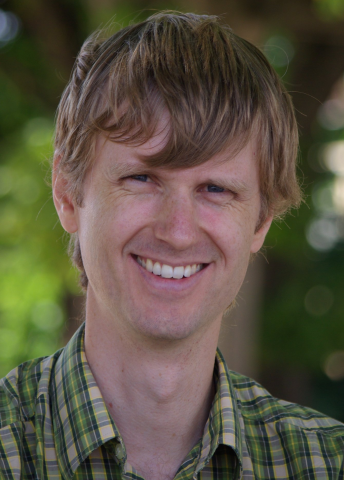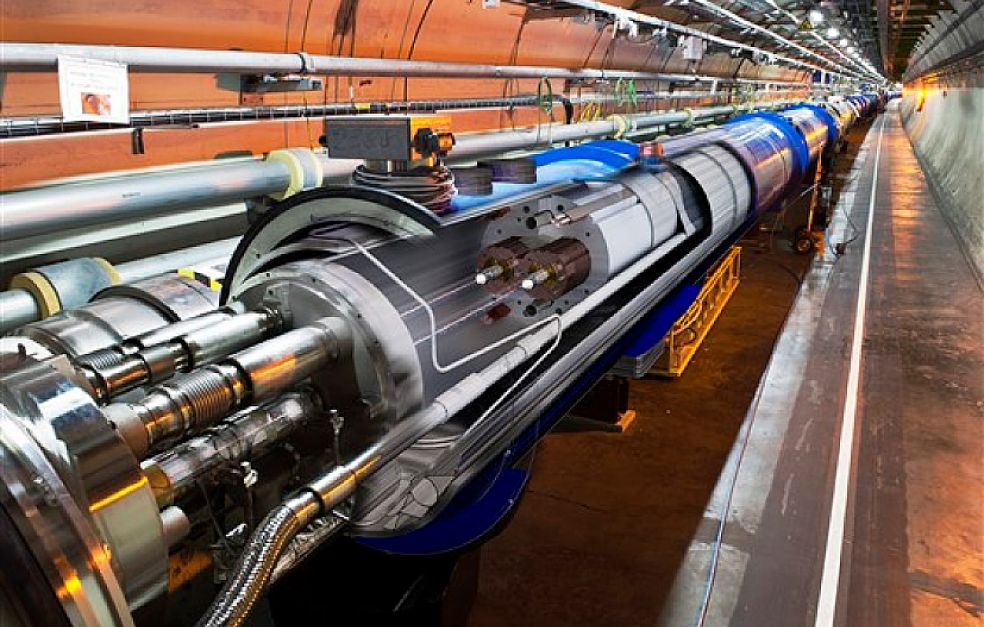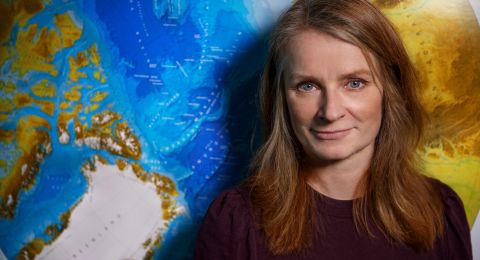Finding new elementary particles – the smallest building blocks of matter and the universe – is like looking for a needle in a haystack, albeit at quantum level. Jonas Strandberg hopes to find two interacting Higgs particles among proton collisions in the Large Halon Collider (LHC), the huge particle accelerator at CERN. The LHC upgrade and a new detector are crucial to success.
Jonas Strandberg
Associate Professor of Particle Physics
Wallenberg Academy Fellow, prolongation grant 2018
Institution:
KTH Royal Institute of Technology
Research field:
Exploring the properties of the Higgs boson using experimental data from the Large Halon Collider at CERN.
Strandberg thinks that heading a research team and long-term projects is very much a question of building strong teams. His group at KTH Royal Institute of Technology is working under the Atlas project, which is one of the experiments being conducted at CERN, the world’s largest laboratory for particle physics, outside Geneva in Switzerland. Several thousand scientists are working together to identify the smallest components of the universe – elementary particles – and understand how they interact in the cosmos.
“I’ve always been interested in leadership and team-building. When I was younger I played a lot of soccer, and I enjoy watching team sports. It’s important for a research team to include people with different backgrounds, competencies and personalities, so that the whole is greater than the sum of the parts. This is an aspect of the Atlas experiment that I appreciate – being part of a major project with a broad common goal, in which everyone does their bit.”
Over the years Strandberg has spent a great deal of time at CERN, building detectors, coordinating and carrying out experiments. He was involved in the enormous team effort to produce proof of the Higgs boson in 2012 (see fact box). The Higgs boson was a long-sought-after missing link in the Standard Model of particle physics, which describes how elementary particles interact with each other. Simply put, the Higgs boson gives certain particles in the universe their mass. Strandberg goes on:
“My research team is still analyzing the Higgs boson’s properties. Among other things, we have started to prepare an analysis to search for two Higgs particles that are created simultaneously.”
Looking for twin particles
LHC at CERN is located in a 27-kilometer-long circular tunnel 100 meters underground. Protons are made to collide with each other in an attempt to recreate the state of the universe immediately after the Big Bang. The Atlas detector captures signals from decay of short-lived particles created by the proton collisions. The researchers then use advanced algorithms to reconstruct and analyze the particles.
Even as LHC was being built, the scientists knew that a major upgrade would be needed by 2026. Strandberg explains:
“Since we are replacing the equipment in any case, we want to take the opportunity to test new technology, and make sure that LHC can give us more collisions – what we call High-Luminosity LHC. You might say that luminosity is a measure of the accelerator’s brightness. The brighter it shines; the more collisions are created.”
Finding two Higgs particles created simultaneously requires far more proton collisions than LHC is currently capable of.
“You have to remember that we’re measuring highly unusual quantum mechanical processes. A Higgs particle is created only once in about ten billion collisions, so the more collisions we have, the more interesting and unusual the physics we can try to find.”
The Standard Model predicts that the Higgs boson should be able to interact with other Higgs particles with a strength that is given by a certain parameter.
“That parameter is vital, because it controls how the Higgs mechanism works, as well as the state and structure of the universe. We know in theory what to expect, but we’ve never measured it. That’s what we want to do when LHC has been upgraded by finding collisions in which two Higgs particles are created.”
“I feel very privileged. The grant gives me security and stability as a researcher, and enables me to commit to the research I believe in.”
Until that happens, they are continuing to sift through data from earlier experiments with the help of AI and similar methods.
“It would be a sensation if we found pair production of Higgs bosons in the data. It would mean that something new and strange had happened, so we have to check, just in case. And at the same time we’re learning how to do it in the future.”
New detector
Strandberg is involved in developing a new type of detector, and also in the efforts being made to improve the way the number of collisions is measured.
“The Atlas detector is made up of smaller detectors. We’re building a new sub-detector, known as a ‘timing detector’. It will be able to time particles coming from collisions down to a few tens of picoseconds. I also want to use it to measure luminosity, how many collisions take place, which is important to know.”
The components are being built in collaboration with large corporate laboratories in France and China. One innovation is a new kind of silicon sensor.
“Here at KTH we’re mainly working to develop ultrafast data processing.”
New problems arise constantly. Strandberg enjoys the challenge:
“The most satisfying aspect of what we’re doing – like building the new detector – is that it’s incredibly creative. We’re trying to get a new technology to work in the highly complicated LHC environment. I really like the challenge posed by this tricky problem.”
Text Susanne Rosén
Translation Maxwell Arding
Photo private, Sara Strandberg, Magnus Bergström, ATLAS collaboration






